Crassula nemorosa
Crassula nemorosa (Eckl. & Zeyh.) Endl. ex Walp.
Family: Crassulaceae
Common names: dwarf cliff-crassula (Eng.), dwergkransplakkie (Afr.)
Introduction
Crassula nemorosa is a dwarf, cliff hugging, geophytic, summer-deciduous succulent, from subterranean tubers. The leaves are bluish-green and broad, with a heart-shaped base. The flowers are cup-shaped, yellowish-green, in an ascending inflorescence, in winter and spring. Grows well in small containers or miniature succulent gardens.
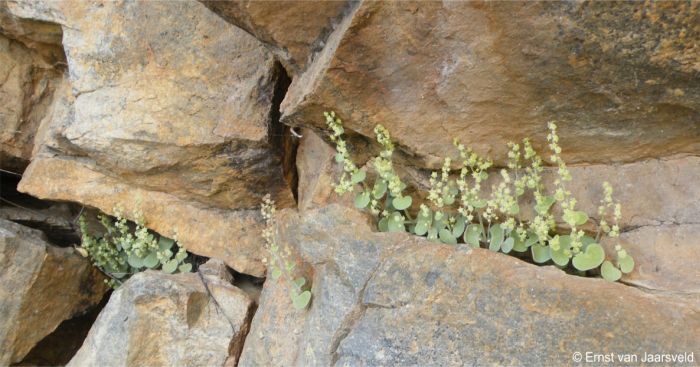
Fig. 1. Crassula nemorosa in full flower in habitat in early spring at Badspoort in the Klein Karoo near Calitzdorp, Western Cape.
Description
Description
Dwarf, summer deciduous, stoloniferous, geophytic succulent plants with erect, fragile, branched to unbranched stems up to 150 mm high. The tubers are spherical, stoloniferous, with fibrous adventitious roots. The leaves are variable in shape, often broader than long, horizontally spreading, kidney-shaped, broadly egg-shaped to orbicular to triangular, 3–15 × 4–13 mm, and flattened (dorsiventrally). The leaf margin is entire, the leaf surface smooth, hairless (glabrous), grey-green, with brown lines becoming maroon-purplish at the end of spring. The petiole is 3–15 mm long and the leaf tip (apex) rounded to blunt (truncate). The base of the leaf is heart-shaped (cordate) to wedge-shaped (cuneate). The inflorescence is a lax terminal thyrse. The calyx lobes are triangular-ovate, up to 2.5 mm; apices acute to obtuse. The corolla is shallowly cup-like, the lobes star-like, the flowers about 8 mm in diameter, cream-white to yellowish green with spear-shaped lobes up to 3.5 mm long of which the tips becoming recurved. The anthers are yellow and the seed minute. Flowering time is in winter, from May–August.
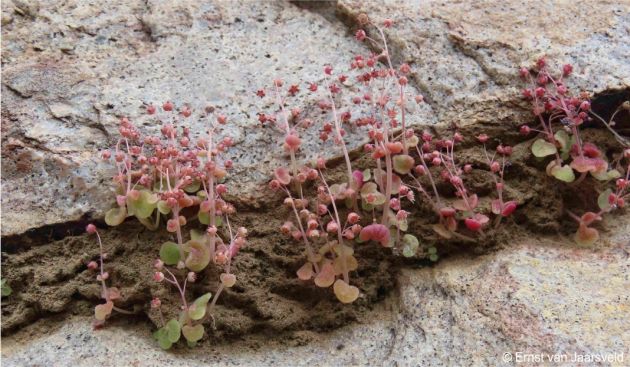
Fig. 2. Crassula nemorosa in fruit in late spring in habitat at Badspoort in the Klein Karoo near Calitzdorp, Western Cape.
Conservation Status
Status
Crassula nemorosa is assessed as Least Concern (LC) by the Red List of South African Plants (Raimondo et al. 2009). It is locally abundant, and well protected by the often inaccessible cliff habitat. It is classified as Rare but not threatened in Namibia by the Red Data Book of Namibian Plants (Loots 2005).

Fig. 3. Crassula nemorosa in winter growing on the cliffs of the Droeeriviersberg near Worcester, Western Cape.
Distribution and habitat
Distribution description
Crassula nemorosa is widely distributed in the southern parts of South Africa, in the Eastern Cape, Western Cape and Northern Cape provinces, and in southern Namibia. It occurs from the Baviaanskloof to Queenstown, in the escarpment mountains of the southern Great Karoo, in the Robertson Karoo and northwards to the Richtersveld and Hunsberg, mostly associated with rock crevices growing on shady southern aspects of cliffs and shady boulders from about 200–1 800m, mainly sedimentary, sandstone, shale or dolomite. Plants grow in shallow soil on rocky ledges, and can form large groups filling up the crevice. Temperatures are hot in summer and warm to mild and cold in winter. The average daily maximum temperature is 22–24°C and daily minimum 9–14°C. Rainfall occurs mainly in summer (thunder showers) in the eastern part of its range, with winter rainfall in the Western Cape and Namaqualand (cyclonic), ranging from 200–450 mm per annum. In spite of the rainfall, the plant retains its winter-growing habit. The associated vegetation consists of the Albany Thicket, Nama-Karoo and Succulent Karoo Biomes (Mucina et al. 2006).
At Danielshoek, between Cradock and Pearston, plants were recorded on a shale cliff face (Beaufort shale, Adelaide Subgroup, Karoo Supergroup). The associated cliff dwellers here are Crassula lanceolata subsp. lanceolata, Crassula lanuginosa var. lanuginosa, Delosperma sp., Drimia uniflora and Haemanthus albiflos. At Meiringspoort plants were observed occupying small crevices in solitary stands.
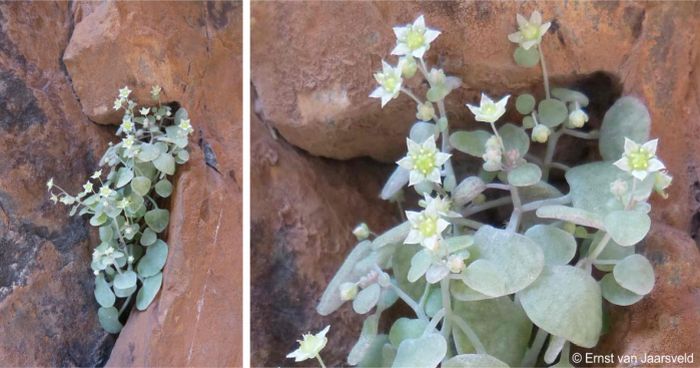
Fig. 4. Crassula nemorosa in flower on a quarzitic sandstone cliff at Meiringspoort in the Western Cape. Note the variability in leaf shape.
On the Baviaanskloof in the east, plants grow in deep, shady, mineral-poor, quartzitic sandstone kloofs (Cape Supergroup) in Gamtoos Thicket, growing from Gert Smitskloof to the Witterivier in the east. The habitat sometimes fringes on fynbos and Afromontane forest along the lower mountain slopes. At Gertsmitskloof, Crassula nemorosa shares its habitat with other cliff-dwelling Crassula lactea, Crassula perfoliata var. minor, Crassula perforata, Delosperma esterhusyseniae, Gasteria rawlinsonii, Drimia anomala, Plectranthus verticillatus and Albuca bracteata (= Ornithogalum longibracteatum). Along the Witterrivier plants grow among moss on shady cliffs.
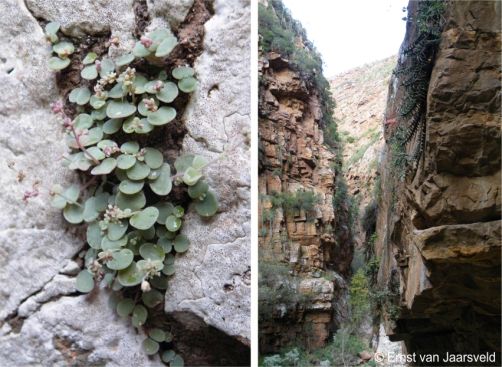
Fig. 5. Crassula nemorosa growing in Gert Smitskloof, Baviaanskloof, Eastern Cape, sharing its habitat with Gasteria rawlinsonii.
At Badspoort near Calitzdorp plants grow in quarzitic sandstone crevices usually in solitary stands and occasionally shares its habitat with Adromischus triflorus. At Droeriviersberg between Worcester and Robertson the plants also grow in mineral-poor quartzitic sandsone soils, occurring as solitary stands filling the rock crevices on south-facing aspects in Robertson Karoo (Succulent Karoo Biome). At Koeries in Bushmanland (Northern Cape) near Aggeneys (Desert vegetation) plants grows in a hard metamorphic gneiss crevices and quartz also in solitary stands sharing its habitat with a species of Oxalis. At Kosies in the Richtersveld (Northern Cape) the plants grow in quarzitic rocks in Succulent Karoo Vegetation.Plants were also photographed on Konsertienaberg, Hunsberg, southern Namibia.
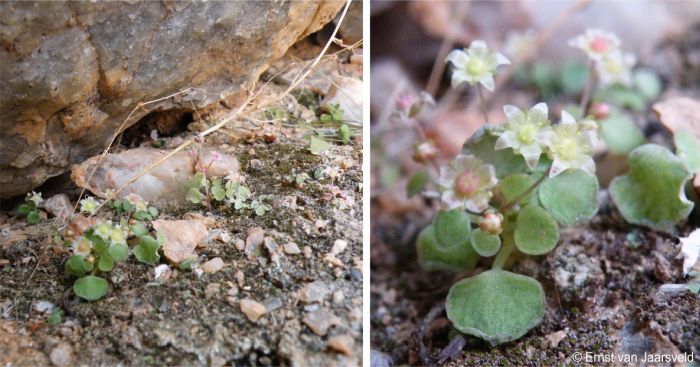
Fig. 6. Crassula nemorosa in flower at Koeriesberg, Bushmanland, Northern Cape. Plants here grow on quarzitic soil and the plants are smaller and less developed (depauperate) due to the dry conditions
Derivation of name and historical aspects
History
Collected at Swartkops and named by both the Danish botanist Christian Ecklon (1795-1868) & the German botanist Carl Zeyher (1799-1858) in 1837 as Petrogeton nemorosum. It was transferred to the genus Crassula in 1843. The former generic name Petrogeton was then used as a section name, accommodating 8 geophytic species. The name Petrogeton is of Greek origin petros meaning ‘rock’ and geton, ‘a neighbour’, pertaining to their rock-dwelling habitat (Clark & Charters 2016). It is an appropriate name since most of the 8 members of this section are associated with boulders and cliffs. The other members include: Crassula umbella, C. simulans, C. dentata, C. capensis, C. saxifraga, C. alcicornis and C. umbraticola. Crassula nemorosa differs from other members of section Petrogeton in its small size, glaucous, distinctly succulent leaves, of which the hydathodes are arranged in a ring on the leaf margin, and in the shallow cup-shaped flowers. The Latin nemorosa, meaning ‘woods and groves’, perhaps pertaining to its shady wooded cliff-face habitat.
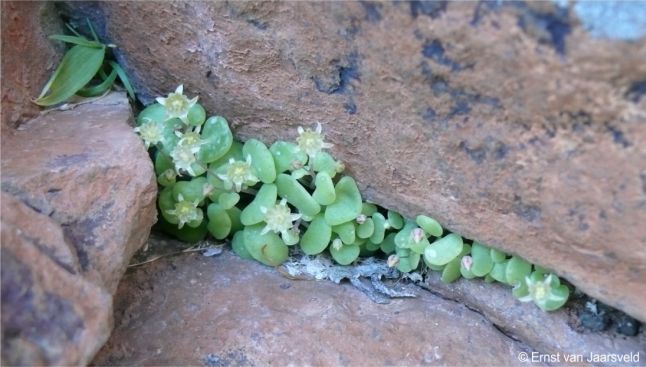
Fig. 7. Crassula nemorosa growing on sandstone, at Kosies, Richtersveld, Northern Cape.
Ecology
Ecology
This miniature cliff-hugging succulent grows in crevices and hairline cracks on shady cliffs in regions where there is little competition from other succulents. The plants grows in soils which vary from acidic to alkaline. Their small size, geophytic nature and cool south-facing habitat enables the plants to escape the dry periods allowing them to flourish in these semi-arid conditions. The bluish-green colour of the leaves is a result of a waxy powdery bloom, which also reduces moisture loss. During times of drought or at the end of the growing season the leaves will become purplish-green, due to anthocyanins, which reduces photosynthesis.
Crassula nemorosa proliferates from its base forming small mats and cushions, an efficient vegetative backup strategy helping the plants to survive the conditions on the cliff face. When an offshoot or portion of a cluster becomes detached and falls into another crevice, as a result of gusts of wind or other disturbance, it will root, ensuring long-term survival.
The inflorescence is conspicuous and the cup-shaped flowers attract insects, the main pollinators. The follicle, holding the very small seeds, is dehiscent, with seeds spontaneously released and dispersed by wind in summer. When a seed lands among moss or lichens on the cliff, it will germinate during autumn or winter, when it rains. Once established it proliferates, occupying crevices. When seeds fall where herbivores can reach, the plants would soon be devoured by herbivores such as the Padloper Tortoise (Homopus areolatus, H. siganatus) or the Tent Tortoise (Psammobates tentorius), which is commonly found in the region.
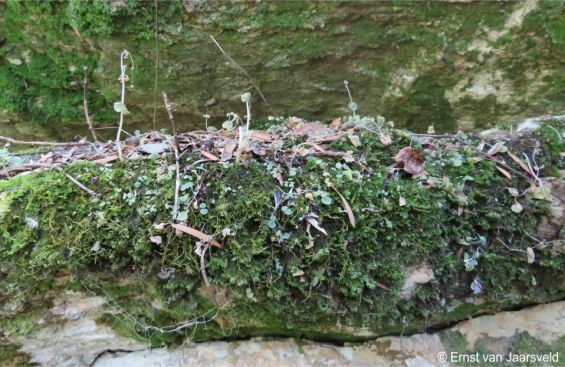
Fig. 8. Crassula nemorosa growing among moss on quarzitic sandstone at Witterivier, eastern Bavianskloof, Eastern Cape.
Uses
Use
It is not known whether the plants are used medicinally.
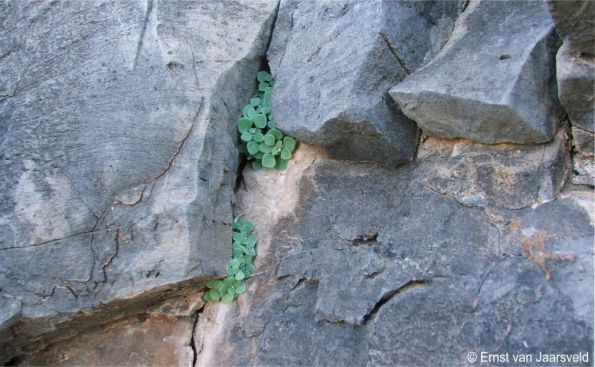
Fig. 9. Crassula nemorosa growing on dolomite on Konsertinakrans, Hunsberg, southern Namibia.
Growing Crassula nemorosa
Grow
Crassula nemorosa is sometimes cultivated. It is best grown as a potplant under controlled conditions. Best for miniature succulent gardens and containers. Grow preferably in dappled shade. Soil should be sandy and well-drained. Add ample amounts of compost or a liquid organic fertiliser. Water well during autumn when the leaves appear. At the end of spring, after flowering, allow the plants to dry out for their summer rest. Roots are sometimes affected by mealybug, and treat accordingly.
Best propagated by division. Plant tubers of offshoots in a sandy soil. Best time is in autumn at the beginning of its growing season. Seed is fine and can be sown in a sandy mixture. Sow seed in autumn and cover with a very thin layer of gravel. Keep moist. Remove seedlings as soon they are large enough to handle.
References
- Christenhusz, M.J.M., Fay, M.F. & Chase, M.W. 2017. Plants of the World, an illustrated Encyclopedia of vascular plants. Kew Publishing, Royal Botanic Gardens, Kew.
- Clarke, H. & Charters, M. 2016. The illustrated dictionary of southern African plant names. Flora & Fauna Publications Trust, Jacana, Johannesburg.
- Craven, P. & Loots, S. 2002. Namibia. In J.S. Golding (ed.), Southern African Plant Red Data Lists. Southern African Botanical Diversity Network Report No. 14: 61–92. SABONET, Pretoria.
- Eggli, U. (ed.) 2003. Illustrated handbook of succulent plants: Crassulaceae. Springer, Berlin.
- Linnaeus, C. 1753. Species plantarum. 1st edition. Salvius, Stockholm.
- Loots, S. 2005. Red Data Book of Namibian plants. Southern African Botanical Diversity Network Report No. 38, SABONET, Pretoria and Windhoek.
- Mucina, L. & Rutherford, M.C. (eds) 2006. The vegetation of South Africa, Lesotho and Swaziland. Strelitzia 19. South African National Biodiversity Institute, Pretoria.
- Rowley, G. 2003. Crassula: a growers guide. Cactus & Co. Vista, California.
- Toelken, H.R. 1985. Crassulaceae. Flora of Southern Africa 14: 1–244.
- Van Jaarsveld, E.J. & Van Wyk, A.E. 1999. Five new cremnophilous taxa from semi-arid regions in South Africa. Aloe 36 (4): 71–74).
Credits
Ernst van Jaarsveld
Kirstenbosch National Botanical Garden (Retired)
Babylonstoren Farm (Current)
Extraordinary senior lecturer and researcher,
Department of Biodiversity and Conservation, University of the Western Cape
July 2024
Plant Attributes:
Plant Type: Succulent
SA Distribution: Eastern Cape, Northern Cape, Western Cape
Soil type: Sandy, Loam
Flowering season: Spring, Winter
PH: Acid, Alkaline, Neutral
Flower colour: White, Cream
Aspect: Shade, Morning Sun (Semi Shade), Afternoon Sun (Semi Shade)
Gardening skill: Average
Special Features:
Horticultural zones







Rate this article
Article well written and informative
Rate this plant
Is this an interesting plant?
Login to add your Comment
Back to topNot registered yet? Click here to register.